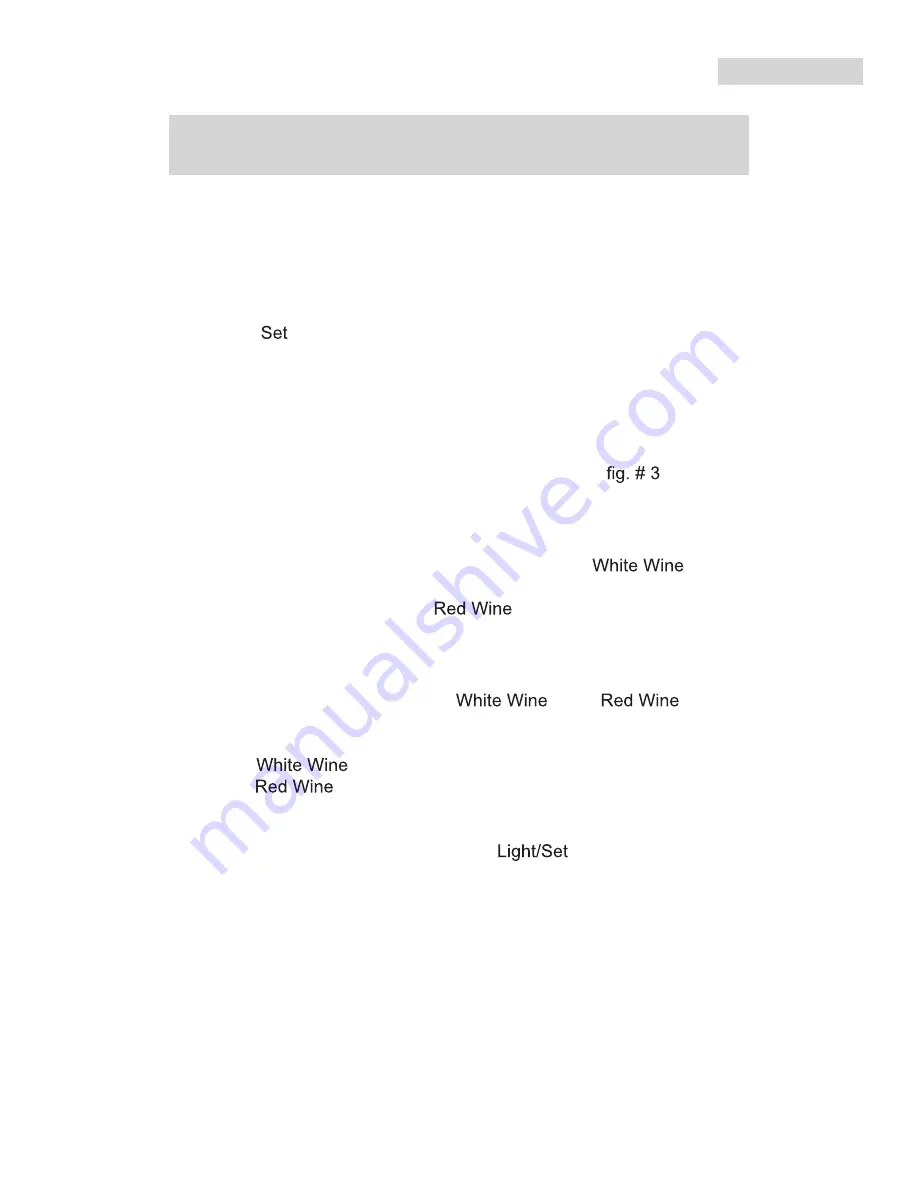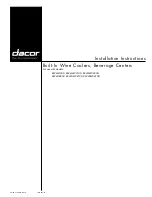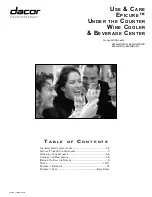
5
English
•
Once the temperature is set for the upper compartment, you will
notice the temperature display blink for the lower compartment.
Again press the up or down arrow button to increase or decrease
the temperature. Once the desired temperature is attained, press
the "
" button. Doing this, the electronic control panel will
memorize the setting. The temperature display will revert back to
display the inside temperature. It may take some time to reach the
set temperature.
WS25GA/WS59GAE/WS30GA
WS30GAE/WS32GAE/WS33GAE
See
•
The wine cellar is preset from the factory to automatically
accommodate temperature requirements for red or white wines.
If you store mostly white wines, press the "
" button
and the wine cellar will maintain an average temperature between
7° to 10 °C. Pushing the "
" button will yield an average
temperature between 13 °C to 16 °C.
•
The wine cellar can be set to any temperature you desire to
accommodate your wine storage requirements. To set the
temperature, press both the "
" and "
" buttons
simultaneously and hold for approximately 3 seconds. Now you are
in temperature set mode. Decrease the temperature by pushing
the "
" button and increase the temperature by pressing
the "
" button. Pressing the appropriate button 3 times will
adjust the temperature 3 degrees, press 4 times equals 4 degrees,
5 times equals 5 degrees, and so on. Once you have selected the
temperature you desire, push the "
" button. Now the wine
cellar is programmed and the LED readout will return to current
internal temperature reading.
Wine Cellar Features And Use
Note: You can add water to the tray to increase the humidity inside
the wine cellar. Some degree of humidity is required in order to keep
wines with corks from drying out. Even when wine bottles are stored
on their sides, one end of the cork is still exposed to air. If the cork
begins to dry out, it can allow oxygen to enter the bottle, filling the u-
llage space and possibly causing the wine to spoil or oxidize. Exces-
sive humidity can also pose the risk of damaging wine labels, which
may hinder identification or hurt potential resale value.












































